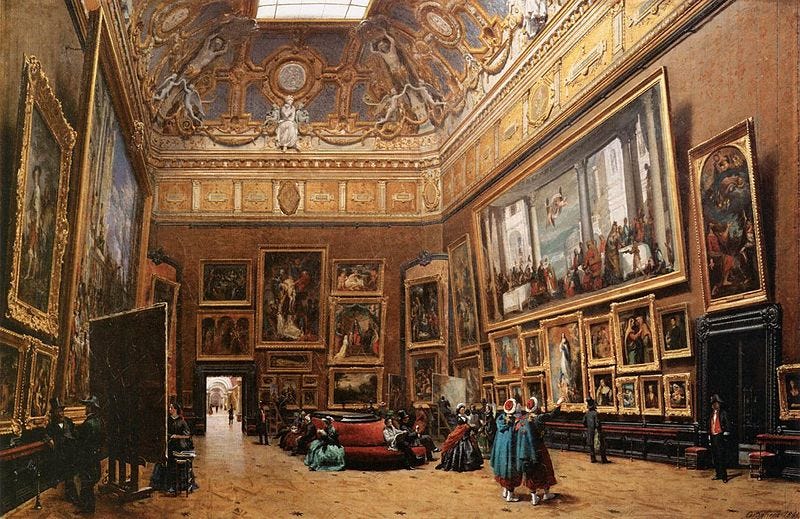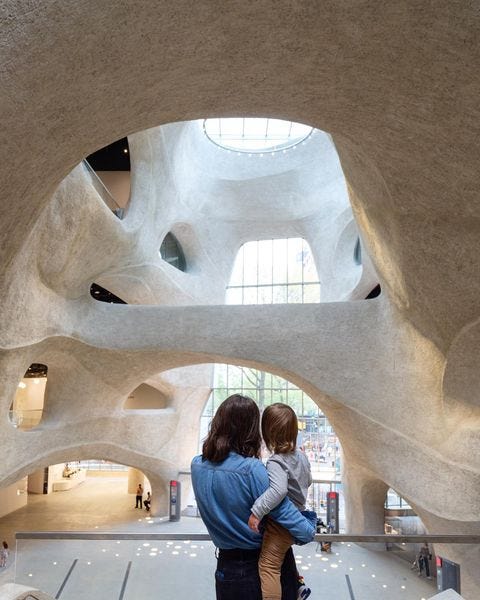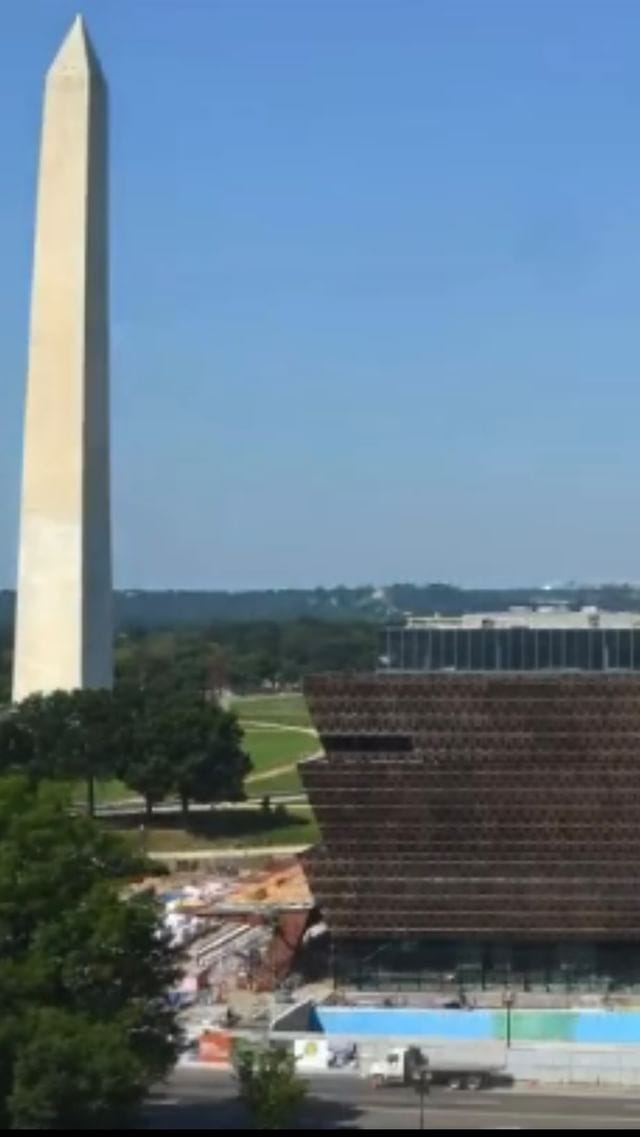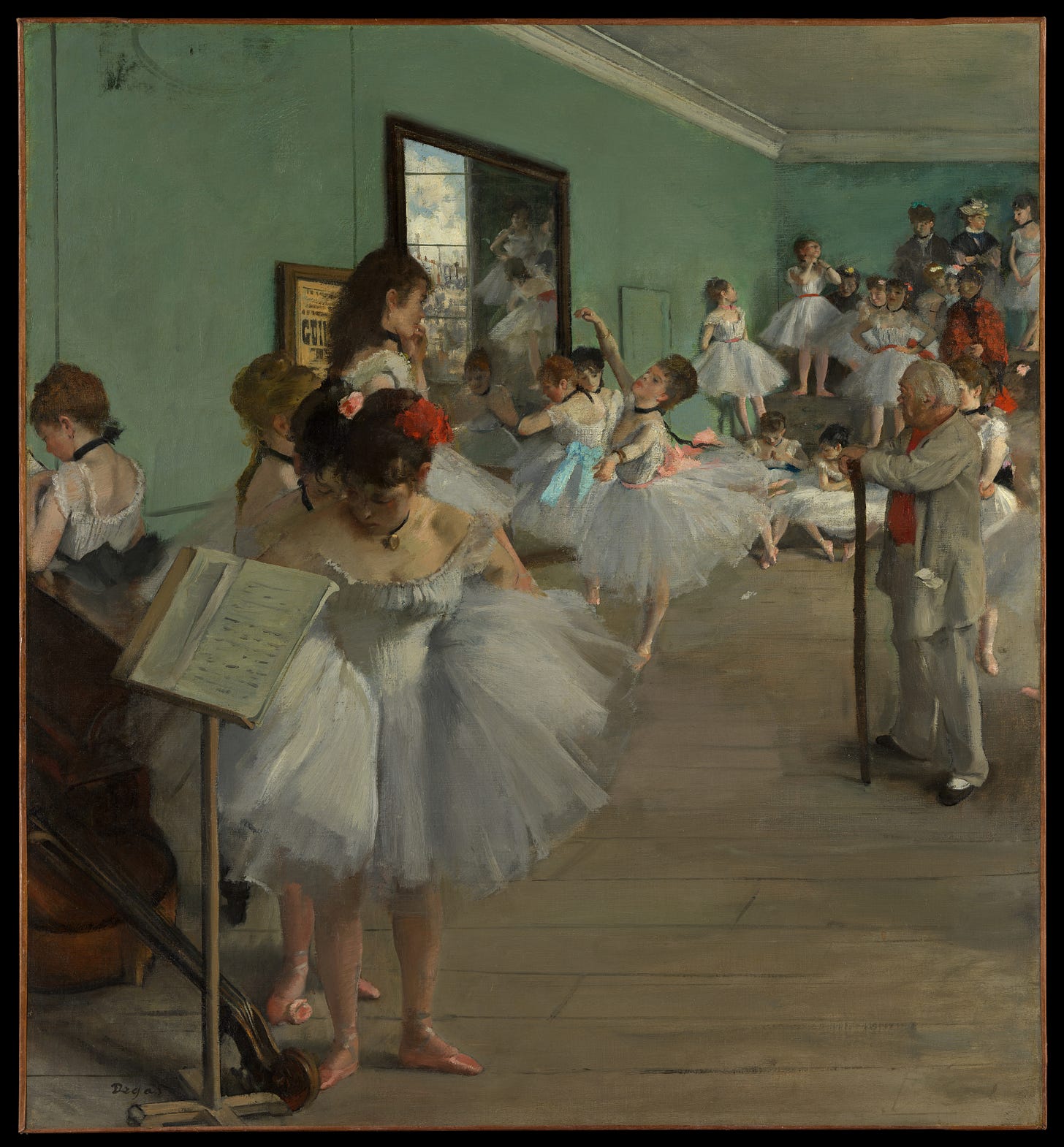How should a museum be?
Plus, I fear the TikTok girls are starting conspiracy theories about Edgar Degas.
Hello!
I have been a bit busy the past two weeks or so as writing this story on textile recycling for Inc. drained me of mental energy as I turned hours of reporting into something cohesive and then spent ample time fretting and making sure I got it all right. I am happy with how it turned out, though. Please read it.
Anyway, I missed a lot in the world of art and culture—I had great ambitions to share what you needed to know about Milan Design Week, but now that is in the past. We can only move forward.
What does a museum look like to you? To be honest, the image that comes to my mind immediately is the museum from Animal Crossing, but only because I think that is one of my ideal forms of museum: It has a little bit of everything. But if you imagined something in that style—Neoclassical, filled with gilded frames and dinosaur bones—you wouldn’t be wrong. But museums today are rethinking how their form, and not just their contents, can better educate the visiting public.
Over the past week, the New York Times ran a special section all about museums; what stood out to me the most, among all the stories, was how it examines the role of the museum today, and how museums are changing with the times—for the better, I think.
First, a heartening statistic that I learned recently (but cannot remember what led me to it): There are more museums in the United States than Starbucks and McDonald’s combined. Not bad for a country with “no culture!” (Please read that in a Kim K. voice). That stat comes from a 2014 Washington Post piece that pulled the number of museums in the U.S. (around 35,000) from data from the Institute of Museum and Library Services. Of course, a lot of these are teeny-tiny—think: historic houses and the like. And even though that stat is 10 years old, it’s still accurate (so long as we haven’t seen a mass closure of museums): in 2024, there are around 30,500 McDonald’s and Starbucks locations in the U.S., combined.
My point: While our attention is far more often on the Met and the Smithsonian and the like, there are a lot of other institutions in the country doing cool things. The Cleveland Museum of Natural History, for one, is undergoing a $150 million renovation that the institution hopes will help it to better connect visitors to the science it is trying to teach, better contextualizing paleontology and the natural landscape with climate change. “We need to evolve, and we need to really think about how we can be civic institutions and share ideas with the community about the knowledge we’ve discovered, and even the knowledge that is still being debated,” Sonia Winner, the Cleveland Museum’s president and chief executive told the Times.
As a New Yorker, I’m obviously reminded of the American Museum of Natural History’s relatively recently opened addition, designed by architect Jeanne Gang and her firm Studio Gang. I am a fan of the cavernous, pebble colored-design, which looks as if it had sprouted from a cliffside on the Greek island Milos and less like it sits a block away from a Shake Shack. I am also reminded of David Adjaye’s Yoruba-inspired design of the National Museum of African American History and Culture and how he didn’t want the building to be another “stone box with things in it.”
I love a bit of Classicism, but diversity of design is important, and I think better represents what museums are trying to do: Building public knowledge. In her book of essays All Things Are Too Small, Becca Rothfeld quotes philosopher William H. Gass, as he says the United States is a place where “the past had been abolished so that everyone could feel they were starting life as equals from a line of opportunity which was the same for all.” This reference is made in reference to Calvinist austerity, but I think it’s worth noting, too, how Neoclassical architecture, particularly in this nation’s capital, evokes the fantasy that colonizing Western forces were always a part of the landscape by channeling ancient empires. I will admit that, like the majority of Americans, I do love this style of architecture, but we should also consider the stories that our buildings tell.
Also of note: The fact that universities across the U.S. are spending millions of dollars to revamp their on-campus museums. These institutions act as a “bridge between the community and the campus” which presents an interesting challenge: how do you serve both constituencies? It may be mutually beneficial, it turns out, to offer more space for students and faculty to learn, grow, and share their findings—why Yale’s Peabody Museum just reopened with five classrooms and why NYU’s Grey Art Museum is adding a study space.
Curators and artists are also reconsidering the context—or setting—in which art is displayed. With his show “An Archaeology of Silence” at the Museum of Fine Arts, Houston, Kehinde Wiley displays his art illuminated in a dark space: “What I wanted to do is create almost a kind of religious feeling,” he writes in the exhibition catalog. He isn’t the only recent artist to experiment with light and darkness, the Times notes. And across the Atlantic, too, institutions are considering how the art they have might best be enjoyed: the Louvre is considering moving the Mona Lisa into a separate, underground chamber, where it might seem less disappointing to visitors.
Of course, museums are also contending with their contents themselves, as we’ve previously gotten into. LA’s Getty Museum just announced last week it was returning an ancient bronze head to Turkey, which it had purchased in 1971; it recently received information that the artifact was likely the result of looting (which…shouldn’t surprise anyone). Meanwhile, the Natural History Museum of Utah is seriously lagging in its rightful return of ancestral remains to Native American tribes; thanks to a recently closed loophole, though, it’s speeding up. New regulations under the Native American Graves Protection and Repatriation Act will allow the museum to repatriate artifacts “based on geography, rather than cultural affiliation,” which will help, as a considerable number of the museum’s archives could not be adequately attributed to specific tribes. Now, the museum is working closely with its Indigenous Advisory Committee to highlight indigenous culture in a way that preserves history without further colonizing it, Lisbeth Louderback, the museum’s curator of archaeology, told The Salt Lake Tribune.
Edgar Degas is Jack the Ripper, according to TikTok. There is not much else to say about this other than I fear the way that conspiracy theories can spread without the use of critical thinking. A video, which has more than 2 million likes, posits that Degas killed at least five women in London in late 1888 for reasons including the fact that he hated women (okay), had a hereditary disease that was leading him to go blind and also insane (?), had a mastery of anatomy (sure), and lived in Paris which wasn’t that far from London, right??? Perhaps it is worth noting that train transit between London and Paris became possible thanks to the Eurostar in…1994.
 Tiktok failed to load.
Tiktok failed to load.Enable 3rd party cookies or use another browser
TikTok user schirrgenius has been posting about this theory multiple times since her original video on April 2. I think my favorite bit is her rather literal interpretation of ribbon chokers as “lines across their throats.” Okay girl with the green ribbon! It is worth noting that American crime novelist Patricia Cornwell rather obsessively developed her theory in the late ’90s/early ’00s that Jack the Ripper was actually a different artist: Walter Sickert.
Why is this happening now? Perhaps because police records from the case just became public for the first time in more than 100 years as they went to auction. Perhaps because someone recently used Midjourney to make AI images of prime suspect Aaron Kosminski that look like they belong on DeviantArt or under some ludicrous Tumblr hashtag. Who is to say? I do think, however, there is a lesson here for arts educators: If you can find a way to make your lessons sound like you’re zig-zagging red string across a wall full of paper “evidence,” you may find yourself with a captive and willing-to-learn audience.
The little wine that could. You’ve likely seen Sancerre on a menu if you’ve ventured to a wine bar anytime recently, but did you know that there are just 285 winegrowers and producers, or vignerons, of it in the small French region? The white wine is made with Sauvignon Blanc grapes, and the largely small, family-owned farms that make it foster a sense of communalism that’s added to its success: “If someone has a health problem, their neighbor won’t hesitate to prune their vines for them,” vigneron Arnaud Bourgeois told the Financial Times. While the wine is known for being young and crisp, winemakers in the region are invested in developing more complex, single-vineyard wines that will age well and showcase the differences between the three different soil types in the area. Santé!
Get your art fix. Frieze New York opens tomorrow and will run through Sunday at The Shed. But there are a number of live performances happening elsewhere in the city; Ellen Fullman’s Long String Instrument sounds particularly cool—with 50-foot-long strings installed in the performance space, she creates music with her rosin-covered fingers. Check out a previous performance below—maybe if I had seen this when I was five years old I would have stuck with the violin. You can get Frieze tickets here.
The Brooklyn Academy of Music is also putting on its annual Long Play festival from May 3-5, which will feature more than 50 concerts across the five days. You can get a single performance ticket, a single-day pass, or a three-day pass here. On Friday, Patti Smith will be performing her collaboration with Soundwalk Collective, Correspondences. Maybe Taylor Swift will show up.
This week I am seeing Illinoise, the Sufjan Stevens and Justin Peck collaboration—which I went up to Bard to see over the summer—and ABT Studio Company at the Joyce; James Whiteside choreographed a piece to Lana Del Rey’s “Young and Beautiful,” so that led to an impulse buy, though I’m also excited for a classic Rose Adagio, too. New York City Ballet is back in season, and I’ve yet to grab tickets for anything, but may do an impromptu show. It is, after all, the last week of my twenties so soon enough I will learn if the cutoff for their $30 for 30 discount is actually 30. Or if 30 is included. Or if they would finally like to accept my repeated proposals to do influencer work for them. Really all I would ask for payment is free tickets. Is that not an easy sell?
Okay, that’s enough for now, but I’ll be back in a few days. In the meantime, I am planning a trip to Vienna in a few weeks—so please let me know if you have any recs. Bye! ▲






